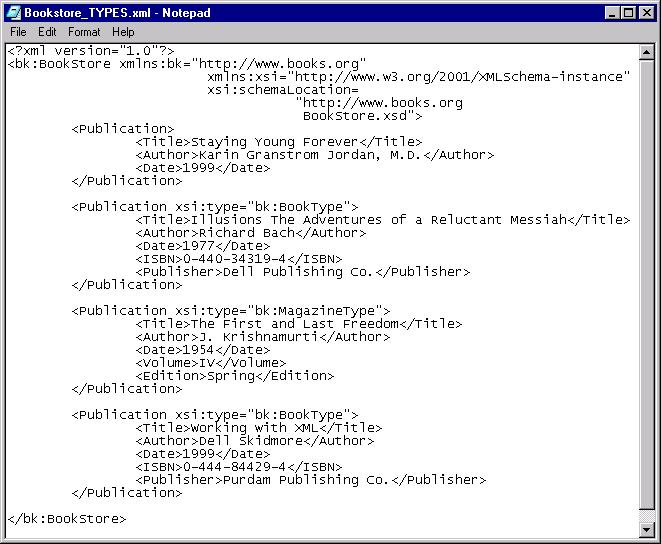PowerCenter
- PowerCenter 10.4.0
- All Products

<xsd:complexType name="PublicationType"> <xsd:sequence> <xsd:element name="Title" type="xsd:string"/> <xsd:element name="Author" type="xsd:string" maxOccurs="unbounded"/> <xsd:element name="Date" type="xsd:string"/> </xsd:sequence> </xsd:complexType> <xsd:element name="Publication" type="PublicationType"/> <xsd:complexType name="BookType"> <xsd:complexContent> <xsd:extension base="PublicationType"> <xsd:sequence> <xsd:element name="ISBN" type="xsd:string"/> <xsd:element name="Publisher" type="xsd:string </xsd:sequence> </xsd:extension> </xsd:complexContent> </xsd:complexType> <xsd:complexType name="MagazineType"> <xsd:complexContent> <xsd:extension base="PublicationType"> <xsd:sequence> <xsd:element name="Volume" type="xsd:string"/> <xsd:element name="Edition" type="xsd:string"/> </xsd:sequence> </xsd:extension> </xsd:complexContent> </xsd:complexType> </xsd:schema>





